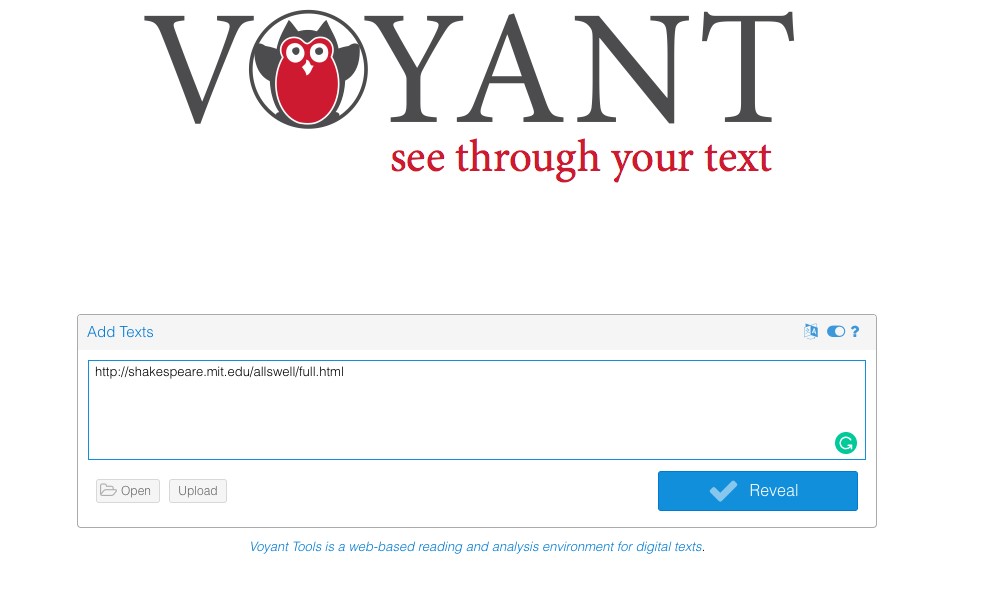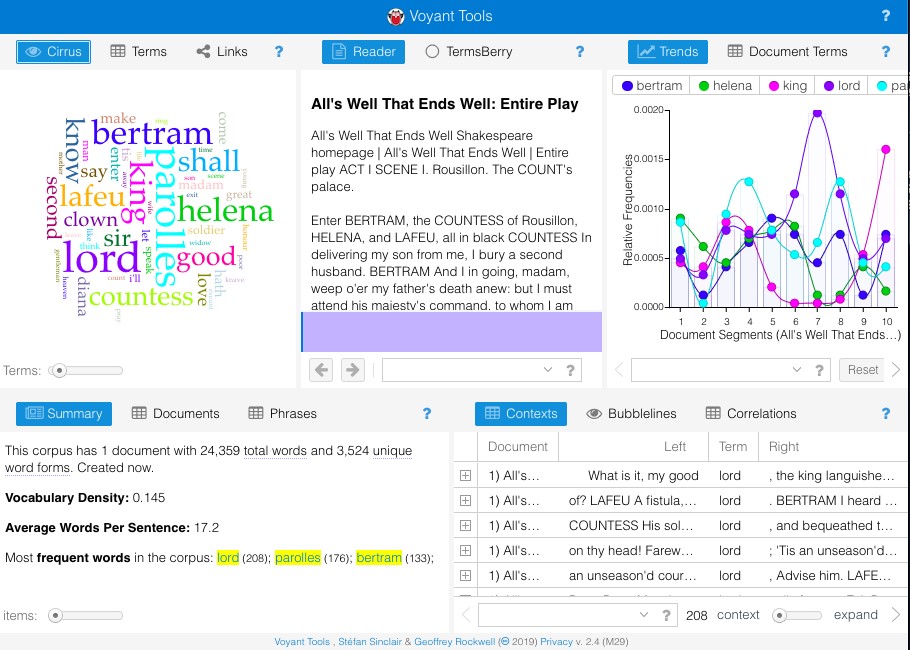Alexandra Hayden is a student in Digital Humanities at Belmont University.
Voyant is an open-source, web-based digital tool that performs text analysis, statistical analysis, and data mining for digital texts. Open-source is a type of software where the copyright holder releases the source code under a license, granting users the right to view, edit, and distribute the software to anyone for any purpose. Data mining is a method of examining extensive databases to produce new information. The primary use of Voyant Tools is to help analyze and interpret scholarly texts to provide a means of deeper understanding through pattern recognition, word frequency, frequency distribution plots, and KWIC (key word in content) displays. Voyant can examine anywhere from small passages that are directly typed by the user into the search tool to massive bodies of work submitted using an external URL (think a Shakespear text online).
Steps:
1) Upon landing on the home page, users will see a text box that prompts you to type, open, or upload your text. I am using Shakespeare’s All’s Well That Ends Well from an online source. The whole text is listed on one page. Upload or paste text/URL and click reveal. http://shakespeare.mit.edu/allswell/full.html


2) After clicking “Reveal,” you will land on the below page. From here, you are able to explore all the functions Voyant offers. So, click around to explore!
Main Tools offered:
*Note: all tools can be exported with a separate URL
Cirrus: shows the number of times a word occurs in the text in a word cloud format
Terms: shows the number of times a word occurs in the text in a list format
Reader: shows the full body of text – hover over a word to see how many times it is listed in the text. If you click on a word, it will highlight it whenever it appears in the text.
TermBerry: mixes visualization with high frequency – hover over a circle to see how many times it is used in the text; this bubble will highlight in green. The bubbles that highlight in pink will give you a co-occurrence number, or how many times they appear in proximity to the green bubble.
Trends: shows the relative frequency of a word in each segment (how many times a word occurs in comparison to the total number of words in the segment)
TermRadio: examine word occurrence over a corpus spanning a period of time
Bubblelines: The text is represented as a horizontal line which is divided into equal segments. Each word is a bubble; the size of the bubble shows the word’s frequency in the specific segment of the text. The bigger the bubble, the more a word appears.
Summary: a textual overview of the test including number of words, number of unique words, shortest and longest documents, lowest and highest vocab density, average number of words per sentence, most frequency words, notable peaks in frequency, and distinctive words
Phrases: shows the number of times a phrases is repeated in the text (count)
More info about tools: https://voyant-tools.org/docs/#!/guide/tools
Review: Overall, I think Voyant is a wonderful tool to help focus your understanding and study of a text. I especially feel Voyant is good for plays and novels where storylines are followed as you are able to use statistical analysis to see where characters and events occur throughout the book.